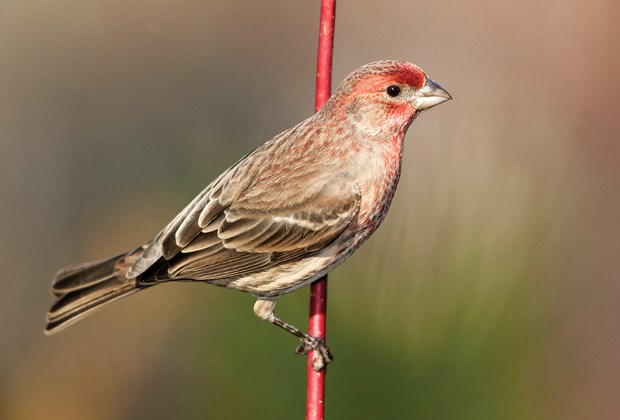One of the real treats of winter on the North Shore for lovers of wild birds is our fine diversity of beautiful finches.
They add so much to cool winter days with their lively voices and lovely colours. No doubt the most commonly seen species locally is the house finch. The male comes in a variety of colours including red, orange and yellow. The house finch can be confused with the purple finch, another North Shore resident whom it is said looks as if it has been dipped in raspberry juice.
Both females have brown stripes, but the purple finch has a distinctive C-shaped mark near the eye, which is a very useful and important field mark. Look for these birds in wild (Pacific) crabapple trees where they love to eat the fruit.
Several local finches are called grosbeak. The evening grosbeak is common in some years, but scarce in others. Its yellowish plumage and huge greenish bill are very distinctive. Don and Lillian Stokes (authors of the book Pocket Guide to Birds) call it the perfect accompaniment to a cold winter day. It is often detected by its "chirp, chirp" call as it flies overhead.
The male pine grosbeak is a lovely pink finch, the female with greyish tones. Watch for this wonderful species feeding on crabapple and hawthorn fruits.
Cross-country skiers and snowshoers should keep a watch for the pine grosbeak along mountain trails, and what a beautiful sight: a pine grosbeak perched atop a fir or hemlock tree.
Another mountain species is the gray-crowned rosy finch. Watch for it along roadsides or weedy patches jutting out of the snow. On occasion it is seen at lower elevations, so keep watching!
Goldfinches, the pine siskin, and redpolls are another distinctive group of finches, at least in their feeding habits. They all love birch and alder seeds.
Not all goldfinches leave the North Shore in winter, but the males do "change" colour, looking more like females.
In some years, the pine siskin is super abundant, but in other years it is scarce. It is an irruptive species like redpolls. (Irruption is an irregular migration of large numbers of birds to areas where they aren't typically found.)
Redpolls are named for their reddish crowns and are often seen in the company of siskins feeding in birch and alder trees. Alder and birch trees are not weed species, but important food sources for a variety of birds.
The common redpoll is the species to expect on the North Shore, a hoary redpoll would be very rare indeed.
Crossbills are so named because their bills are actually crossed over each other, an adaptation for extracting seeds from conifer cones like spruces and Douglas fir.
The more commonly seen species on the North Shore is the red crossbill. The rarer white-winged crossbill should be looked for with a flock of "reds" especially in the mountains in winter.
Sometimes at The Conservation Area at Maplewood Flats crossbills are seen along the seashore probably attracted by salt.
Wild birds, like our beautiful winter finches, bring us so much joy. Enjoy the birds. Keep safe.
Al Grass is a naturalist with Wild Bird Trust of British Columbia, which offers free walks at The Conservation Area at Maplewood Flats on the second Saturday of every month. The next walk will be on Saturday, Dec. 13 starting at 10 a.m. The group will be looking for wintering birds. Meet at Wild Bird Trust's site office, which is located at 2645 Dollarton Highway (two kilometres east of the Iron Workers Second Narrows Memorial Crossing). Walks go rain or shine.



